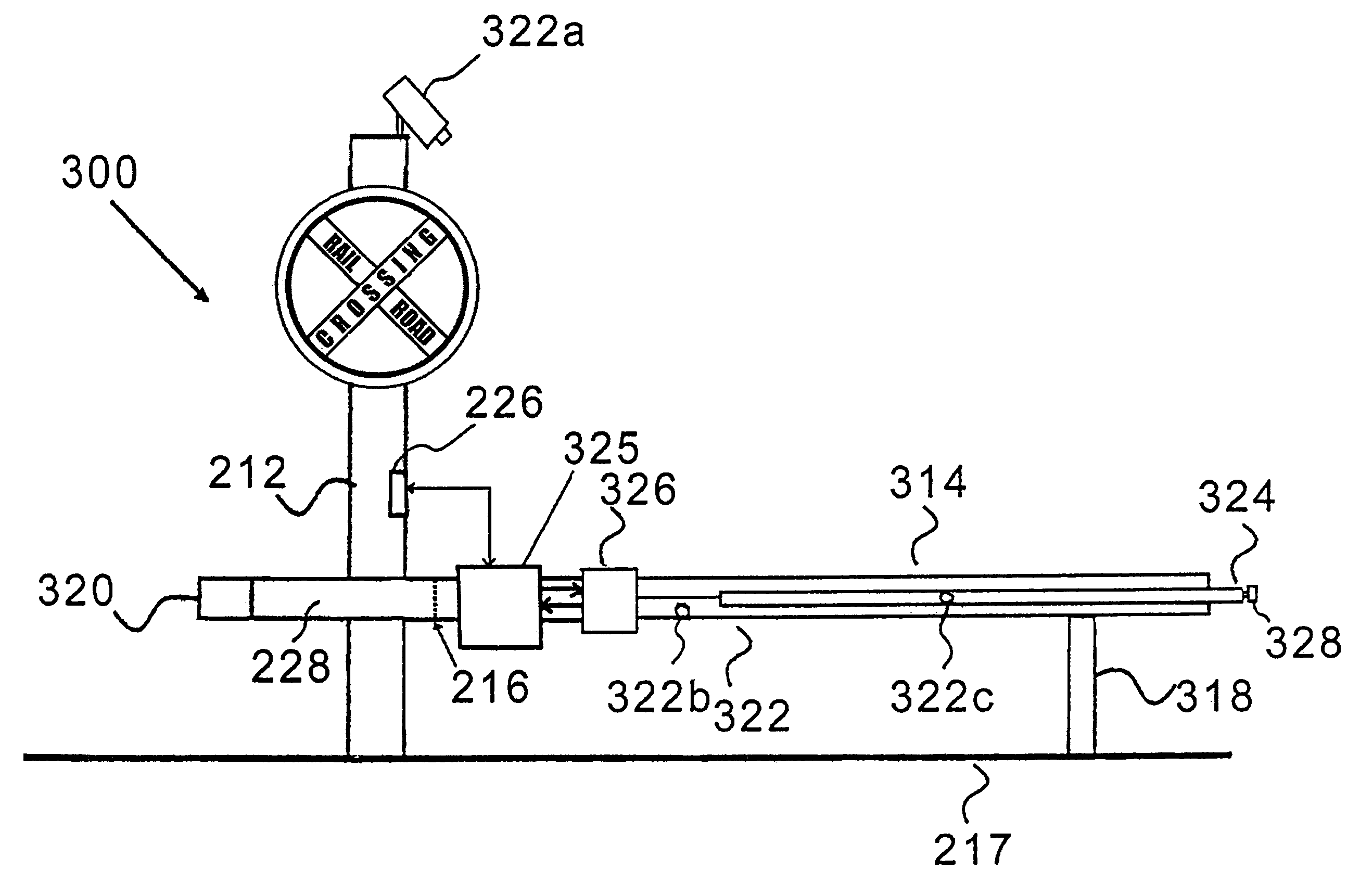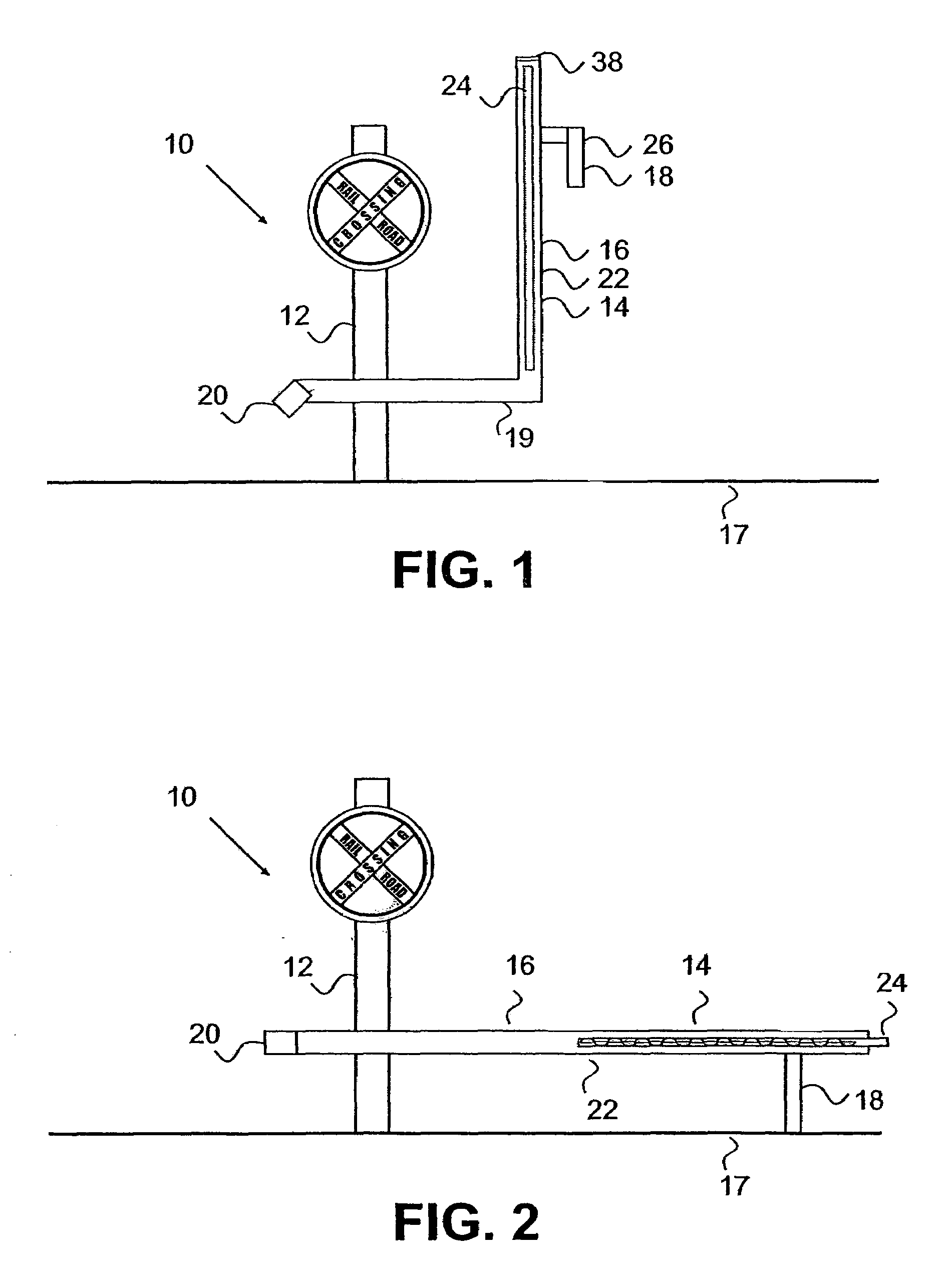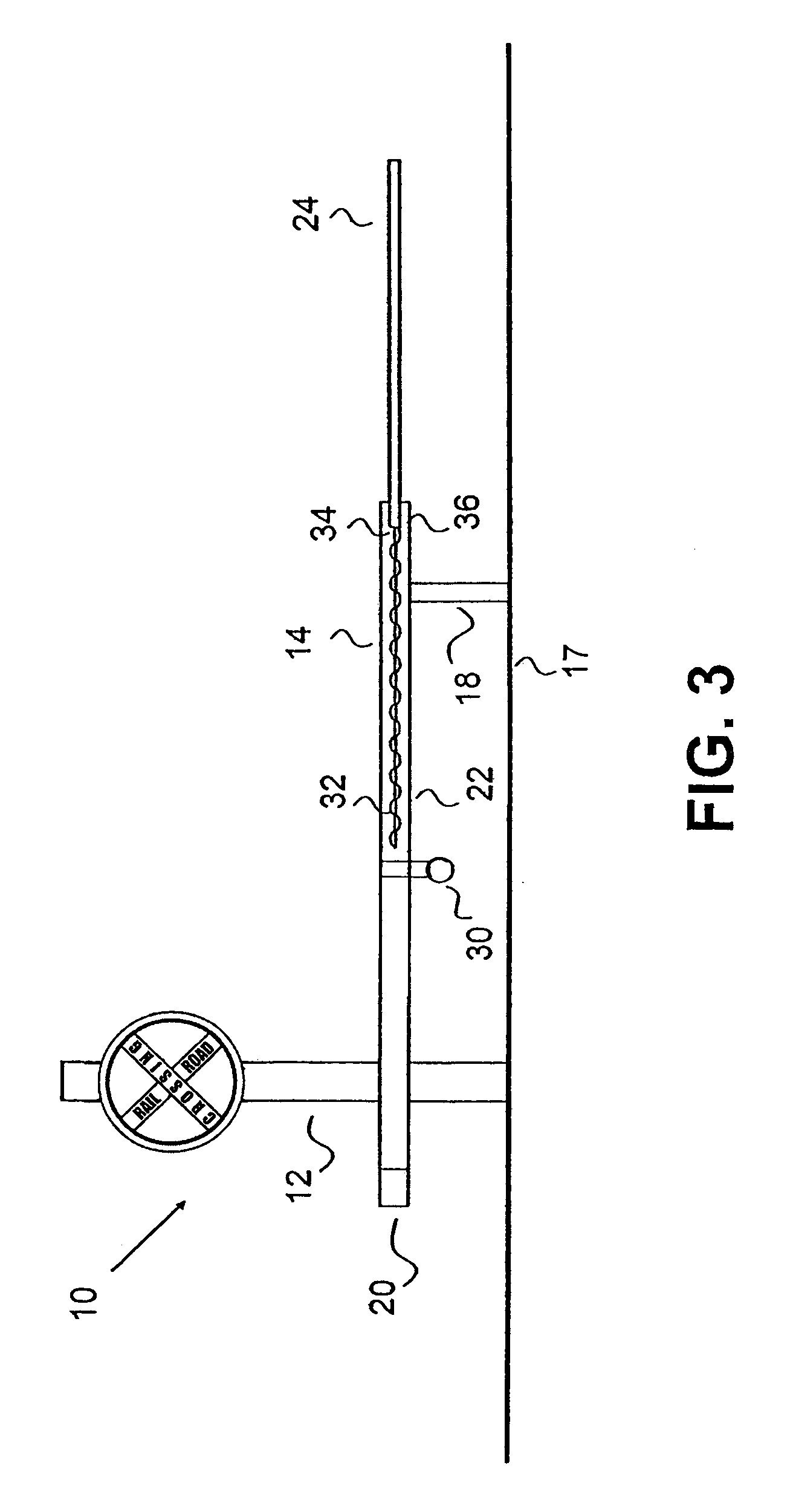Railroad grade crossing assembly
a grade crossing and assembly technology, applied in the direction of traffic gates, wing accessories, ways, etc., can solve the problems of lack of intelligent monitoring and control capability, prior gates provide little more than the most basic monitoring and control functions, and prior gates have a notable presen
- Summary
- Abstract
- Description
- Claims
- Application Information
AI Technical Summary
Benefits of technology
Problems solved by technology
Method used
Image
Examples
first embodiment
[0038]Referring now to FIGS. 1 through 3 of the drawings, a railroad grade crossing assembly in accordance with the teachings of the present invention is illustrated. This railroad grade crossing assembly 10 of the present invention can be adapted to an existing stanchion and light assembly 12 which included a gate assembly (not shown) which only partially closed the railroad crossing.
[0039]Here, the railroad grade crossing assembly 10 of the present invention is formed of an improved gate assembly 14 which is connectable to the existing stanchion and light assembly 12. As is shown in FIGS. 1 through 3, the gate assembly 14 includes a two piece telescopic arm assembly 16 and a gravity actuated support leg 18. This arm assembly is movable between a generally upright position (see FIG. 1) and a generally horizontal position (see FIGS. 2 and 3). In the generally upright position of the arm assembly 14 of FIG. 1, the base of the arm assembly 19 is held in a generally horizontal orientat...
second embodiment
[0043]a railroad grade crossing assembly according to the present invention is illustrated in FIGS. 4-7.
[0044]FIG. 4 is a plan view showing a railroad grade crossing assembly 40 according to the second embodiment, and showing how the railroad grade crossing assembly according to the second embodiment can be attached to a preexisting stanchion 42 and arm assembly 44. As can be seen from the figure, the crossing assembly includes an outer gate 46 and an inner (or “telescoping”) gate 48. The assembly of the invention is attached to a preexisting stanchion 42 and arm 44 by cutting arm 44 as indicated at position 44a and then splicing outer gate 46 to the arm.
[0045]More specifically, the crossing assembly of the invention can be employed at existing railroad crossings by laying assembly 40 across the roadway where it is to be used such that the assembly in its extended state would completely close the roadway at the location of the existing stanchion. Once the assembly is laid out in thi...
third embodiment
[0055]Referring now to FIG. 7 of the drawings, a railroad grade crossing assembly in accordance with the teachings of the present invention is illustrated. This railroad gate crossing assembly 110 of the present invention is self contained and can be adapted to an existing stanchion and light assembly 112 which may or may not included a gate assembly (not shown) which only partially closed the railroad crossing. The assembly provides its own power supply.
[0056]Here, the railroad grade crossing assembly 110 of the present invention is formed of an improved gate assembly 140 which is connectable to the existing stanchion 112. As can be seen from the figure, the crossing assembly includes an outer gate 146 and an inner (or “telescoping”) gate 148. The assembly of the invention is attached to a preexisting stanchion 112.
[0057]More specifically, the crossing assembly of the invention can be employed at existing railroad crossings by laying assembly 140 across the roadway where it is to b...
PUM
 Login to View More
Login to View More Abstract
Description
Claims
Application Information
 Login to View More
Login to View More - R&D
- Intellectual Property
- Life Sciences
- Materials
- Tech Scout
- Unparalleled Data Quality
- Higher Quality Content
- 60% Fewer Hallucinations
Browse by: Latest US Patents, China's latest patents, Technical Efficacy Thesaurus, Application Domain, Technology Topic, Popular Technical Reports.
© 2025 PatSnap. All rights reserved.Legal|Privacy policy|Modern Slavery Act Transparency Statement|Sitemap|About US| Contact US: help@patsnap.com



